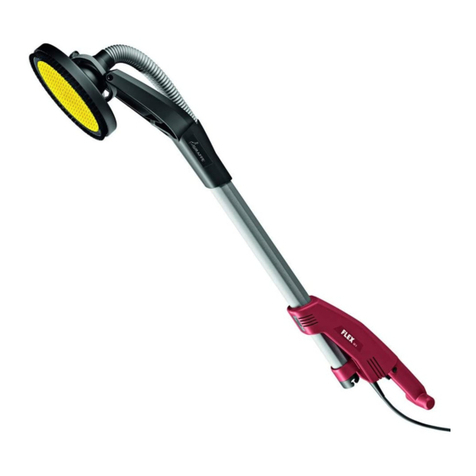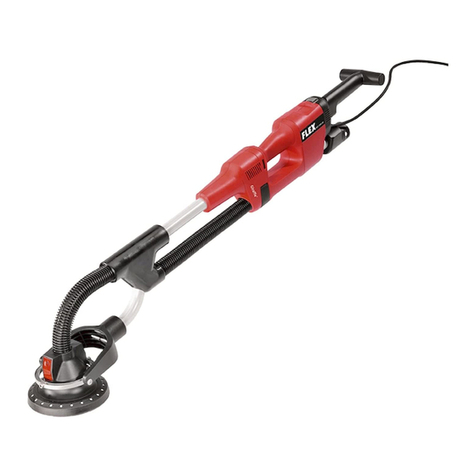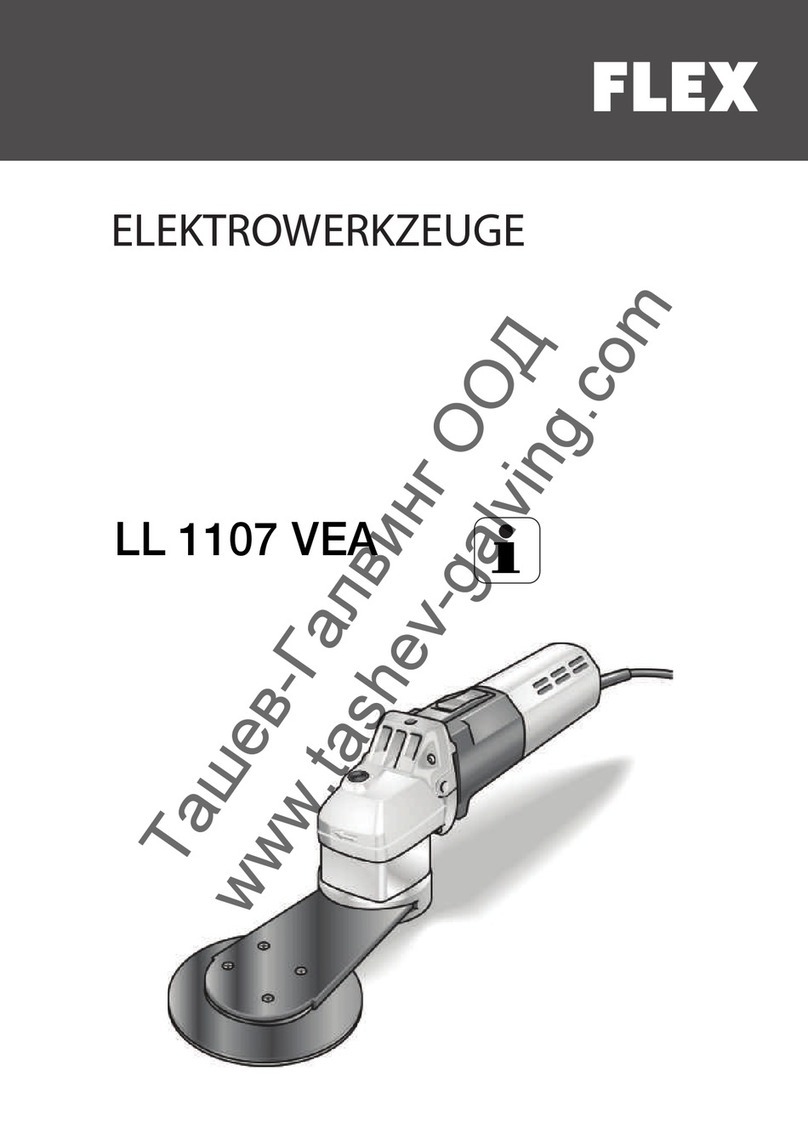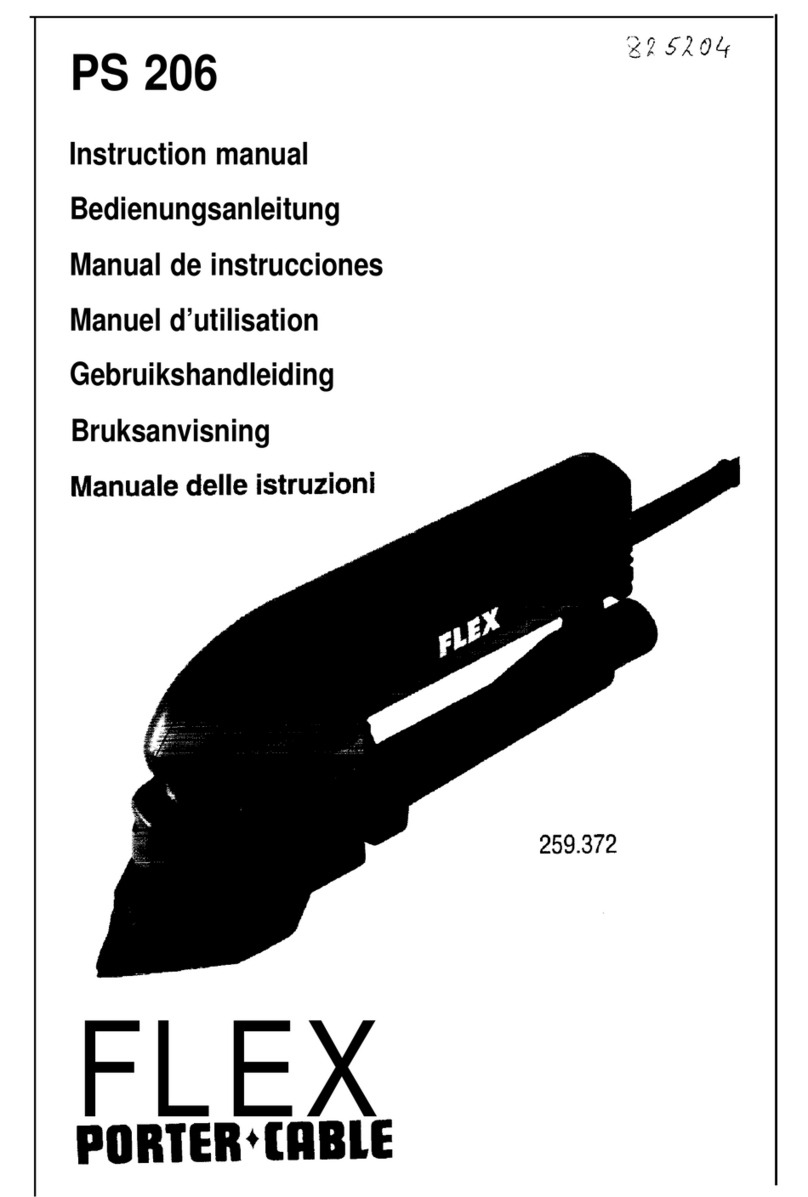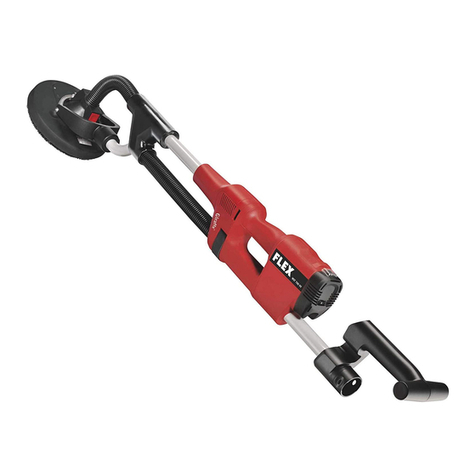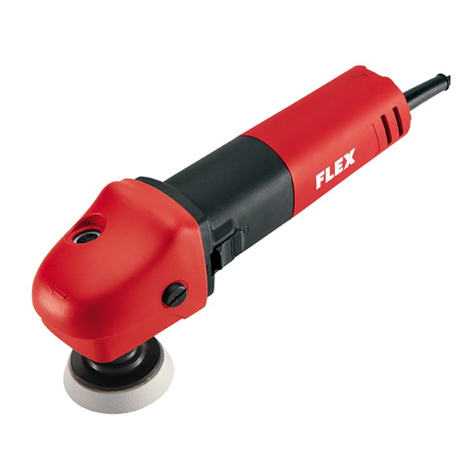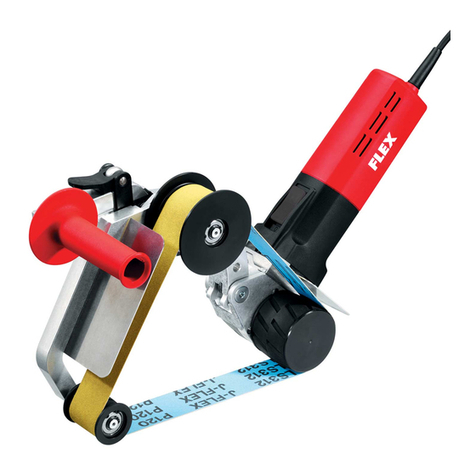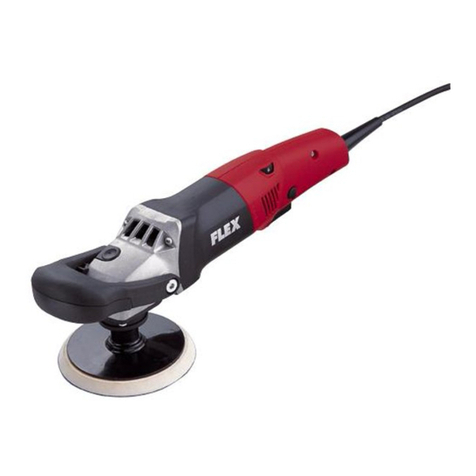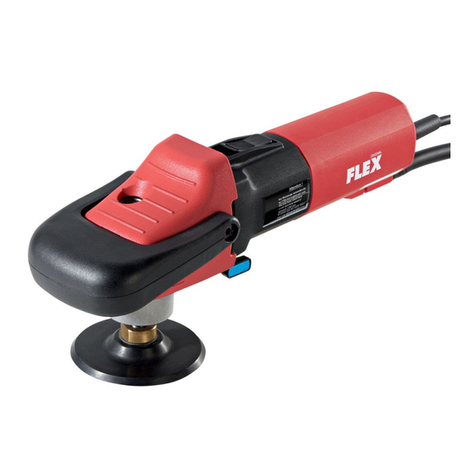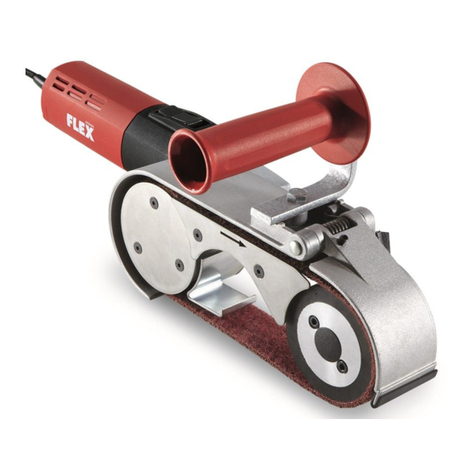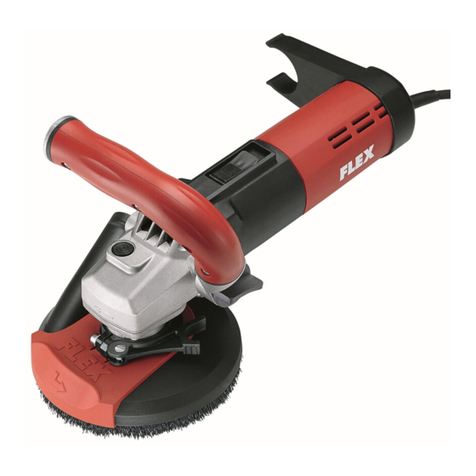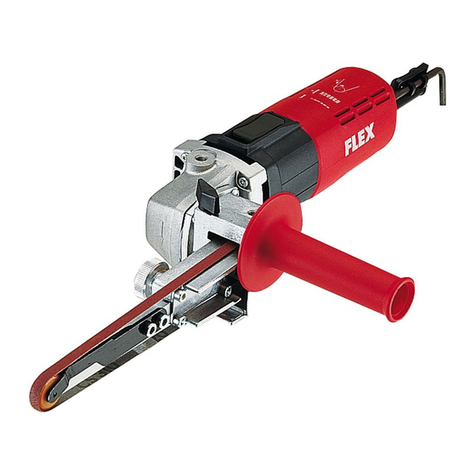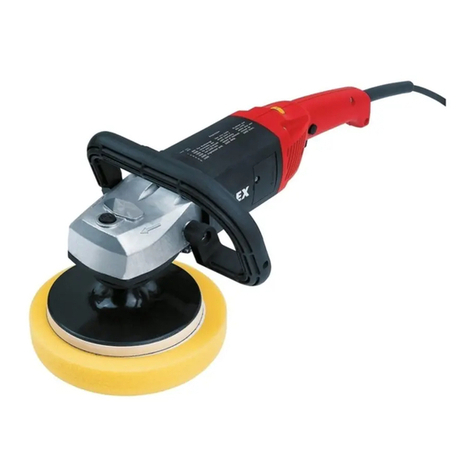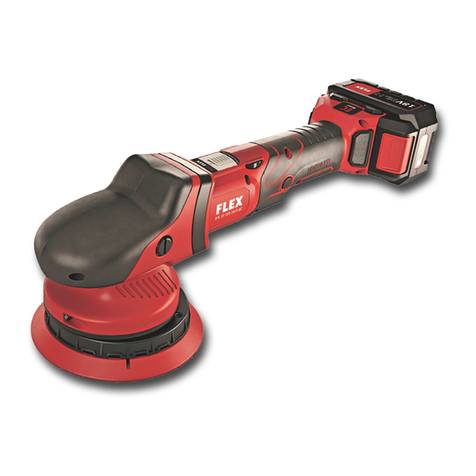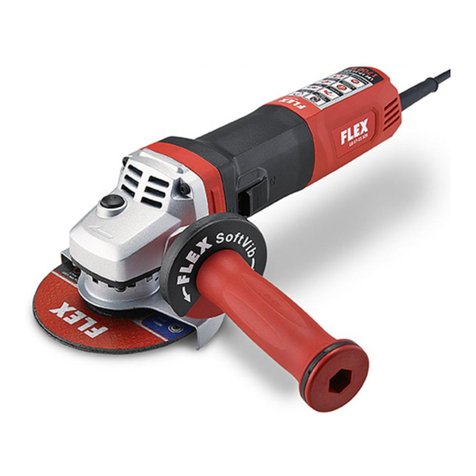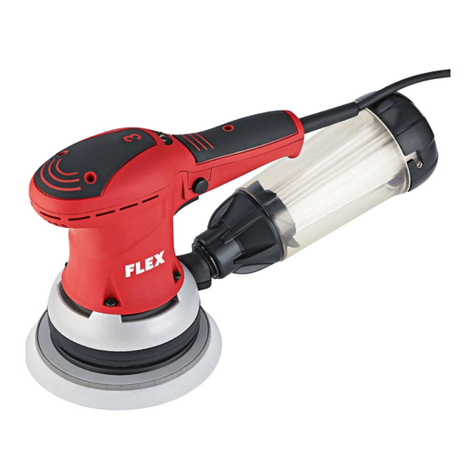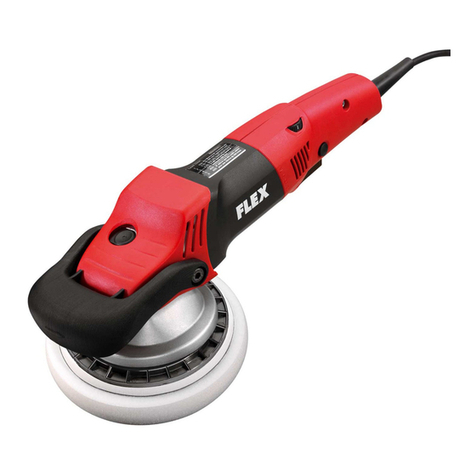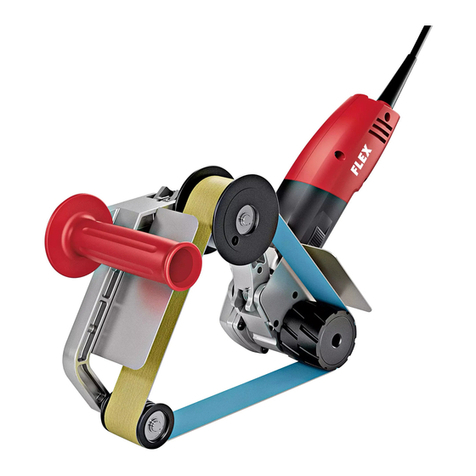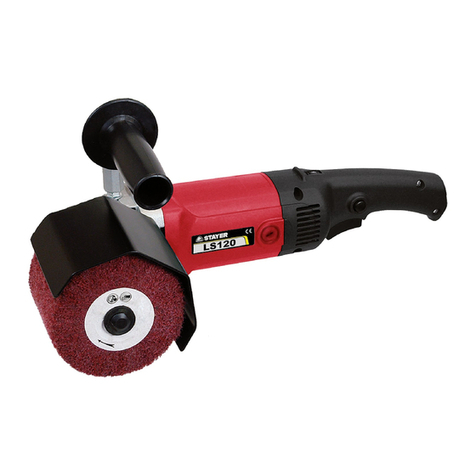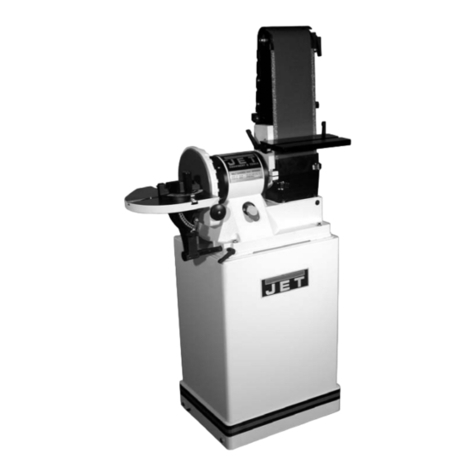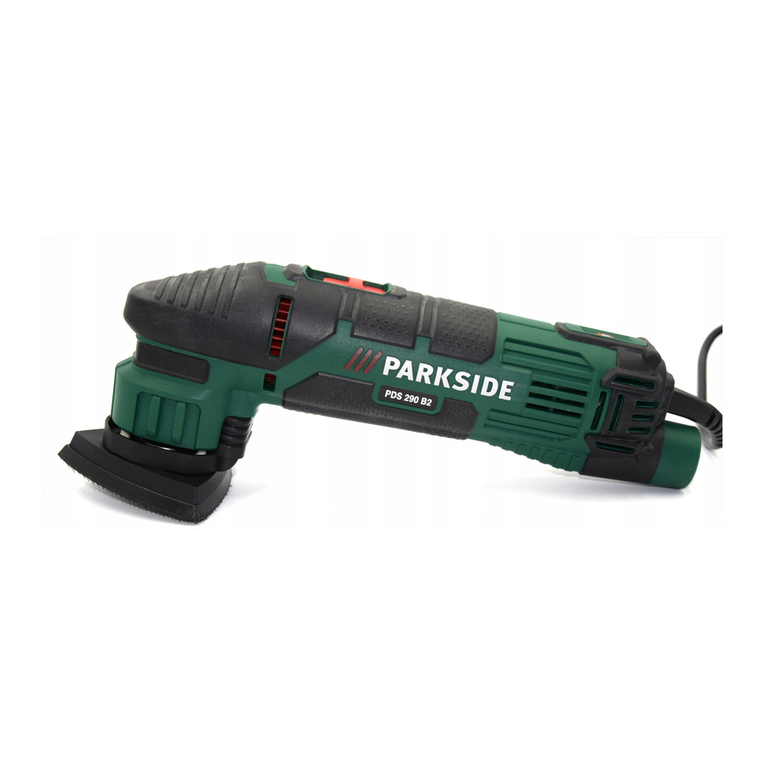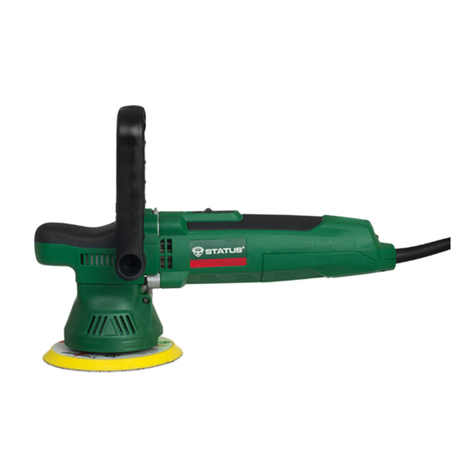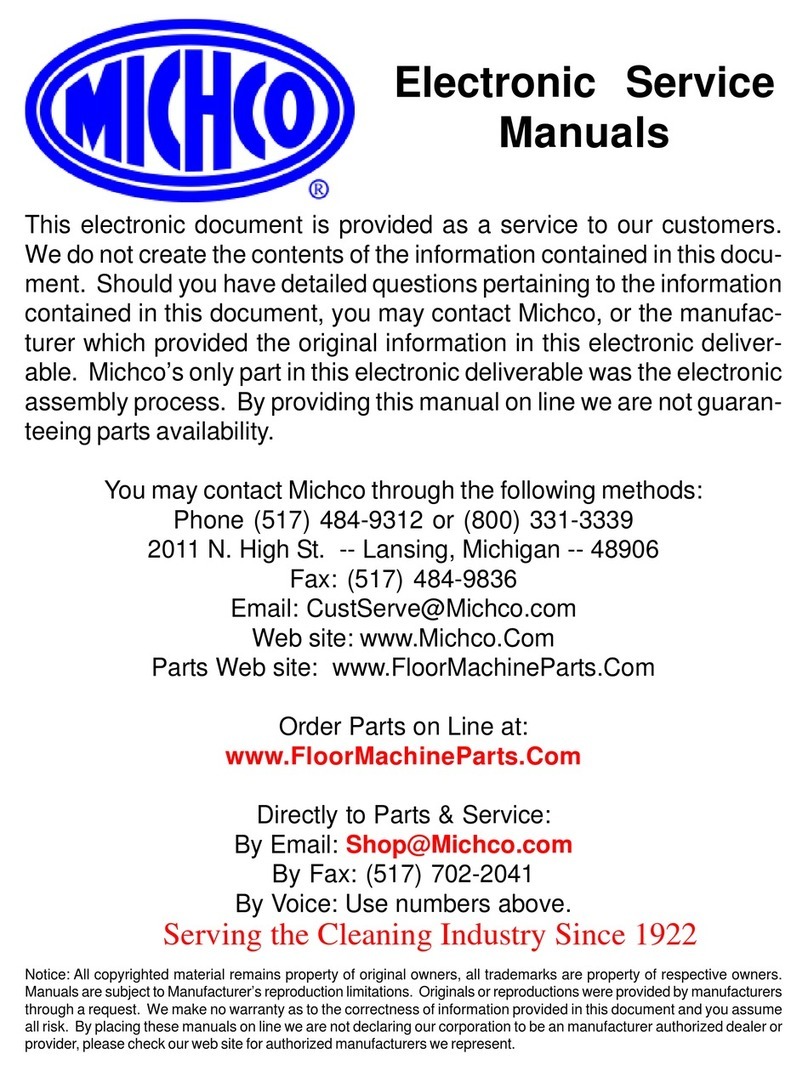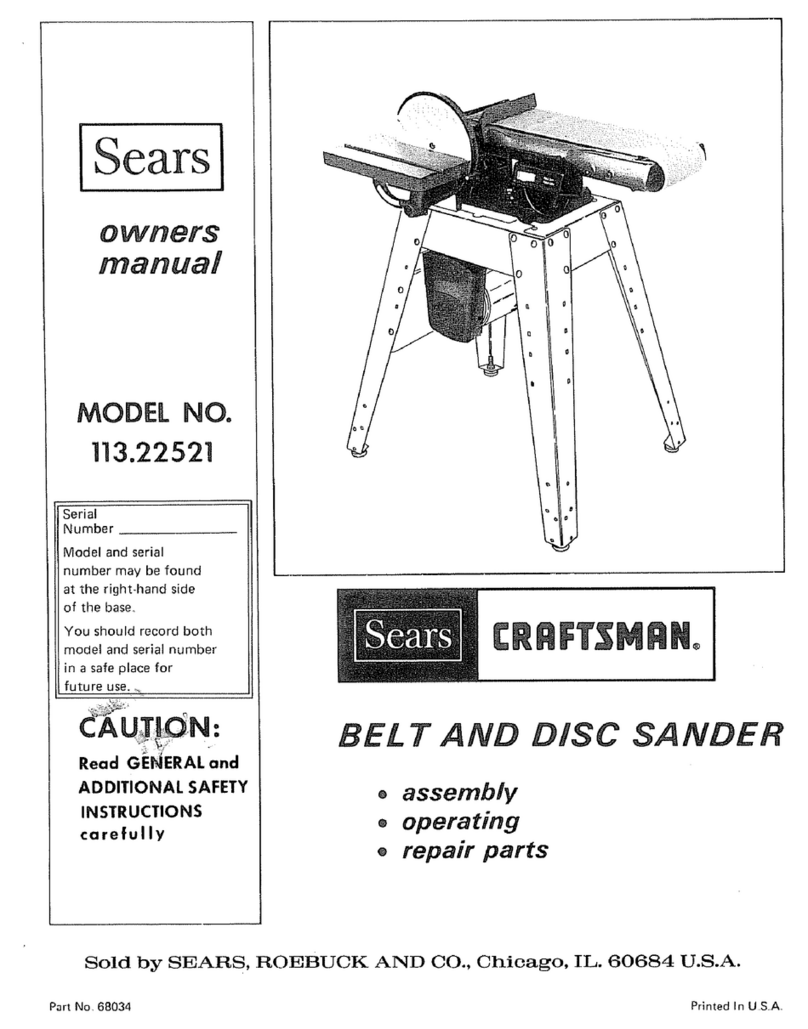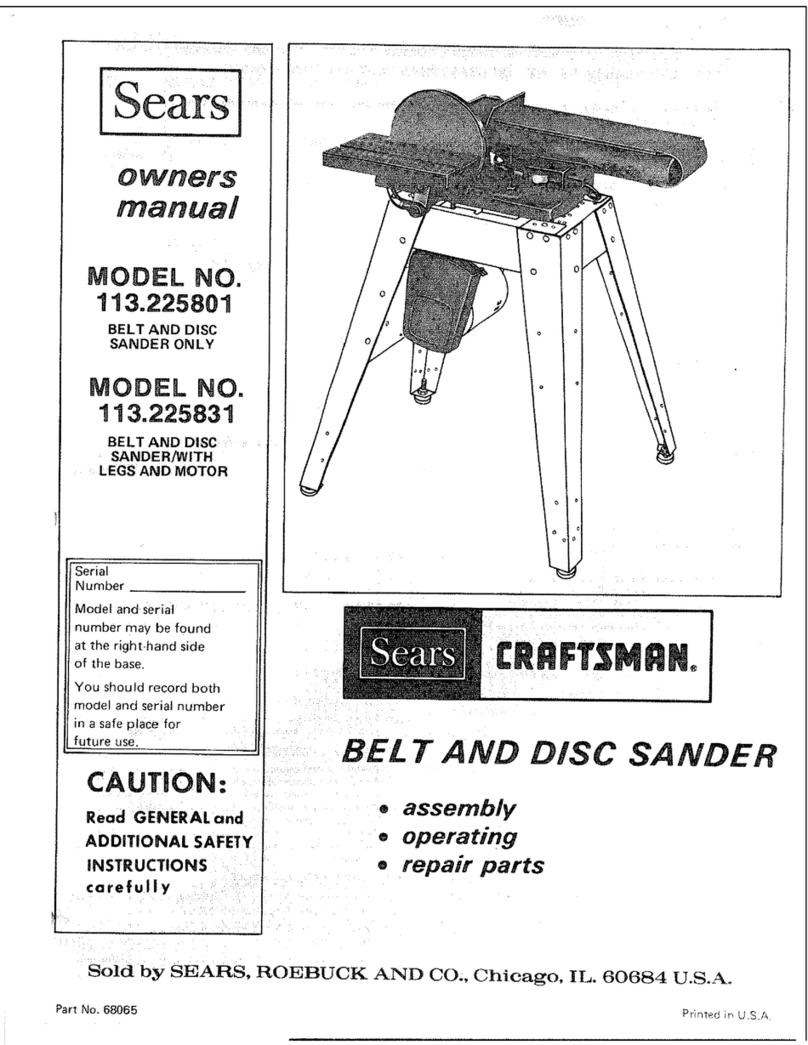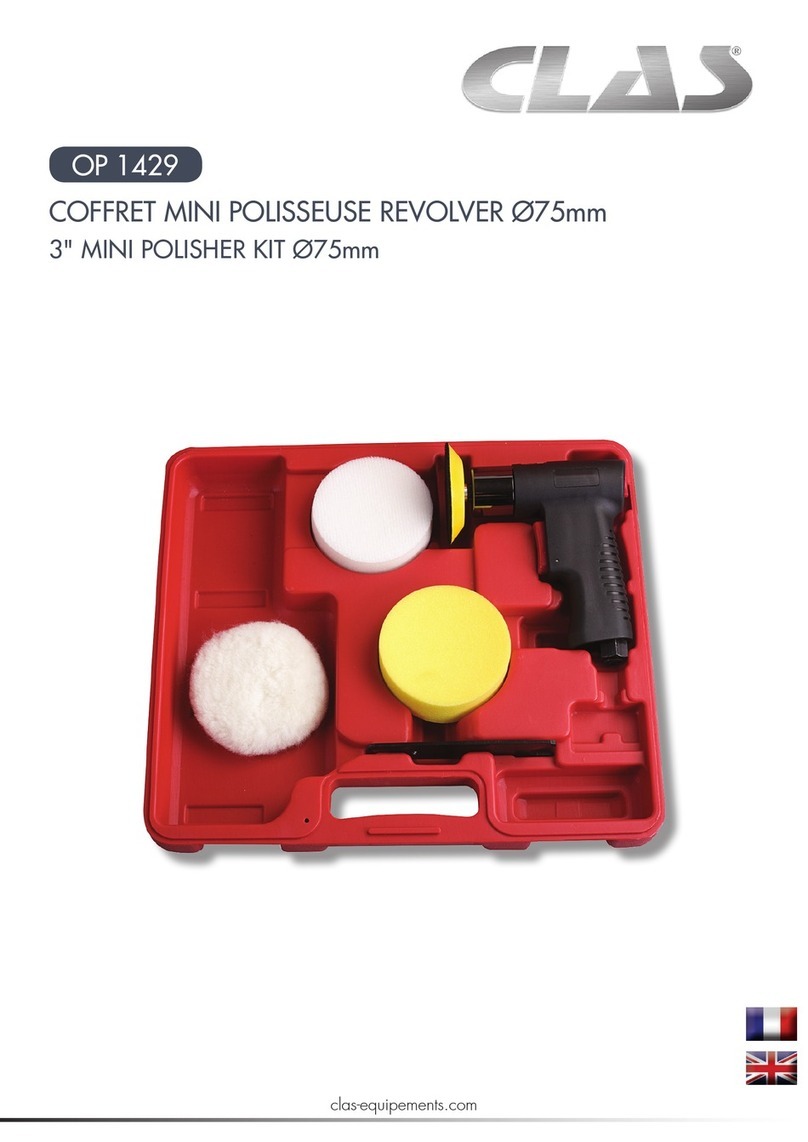
Polisher XC 3401 VRG
6
SPECIFIC SAFETY RULES AND SYMBOLS
This electric power tool must be
used as a polisher. Observe all
safety information, instructions,
diagrams and data which you
receive with the power tool.
If you do not observe the following
instructions, an electric shock, fire and/or
serious injuries may occur.
This electric power tool is not
suitable for use as sander, with
sandpaper, wire brushes or for
cut-off grinding.
If the electric power tool is not used as
intended, the user may be exposed to
hazards and may be injured.
Never use accessories which the
manufacturer did not intend or
recommend especially for this
electric power tool.
Just because you can attach the
accessory to your electric power tool
does not guarantee safe use.
The permitted speed of the insertion
tool must be at least as high as the
maximum speed indicated on the
electric power tool.
An accessory which rotates faster than
permitted may shatter and fly off.
Outer diameter and thickness of the
insertion tool must correspond to
the dimensions of the electric power
tool.
Incorrectly measured insertion tools
cannot be adequately shielded or
controlled.
Sanding discs, sanding pads or
other accessories must fit exactly on
the grinding spindle of your electric
power tool.
Insertion tools, which do not fit exactly on
the grinding spindle of the electric power
tool, rotate unevenly, vibrate violently
and may result in loss of control.
Do not use any damaged insertion
tools. Before use, always check
insertion tools for splinters and
cracks, sanding pad for cracks, wear
and severe abrasion. If the electric
power tool or the insertion tool
is dropped, check for damage or use
an undamaged insertion tool. When
you have checked and inserted the
tool, ensure that you and anybody in
the vicinity remain outside the plane
of the rotating insertion tool and
leave the power tool running for one
minute at maximum speed.
Damaged insertion tools usually break
during this test time.
Wear personal protective
equipment. Depending on the
application, wear full face
protection, eye protection or
goggles. If appropriate, wear a dust
mask, hearing protection, protective
gloves and/or a special apron which
protect you from small sanding and
material particles.
You should protect your eyes from
foreign objects which are ejected for
different applications. Dust and
respirator masks must filter the dust
which is generated by the power tool for
the particular application. If you are
exposed to loud noise for a prolonged
period, you may suffer hearing loss.
Ensure that other persons are
situated at a safe distance from the
work area. Anyone who enters the
work area must wear personal
protective equipment.
Fragments of the workpiece or broken
insertion tools may fly off and cause
injuries even outside the direct working
area.
